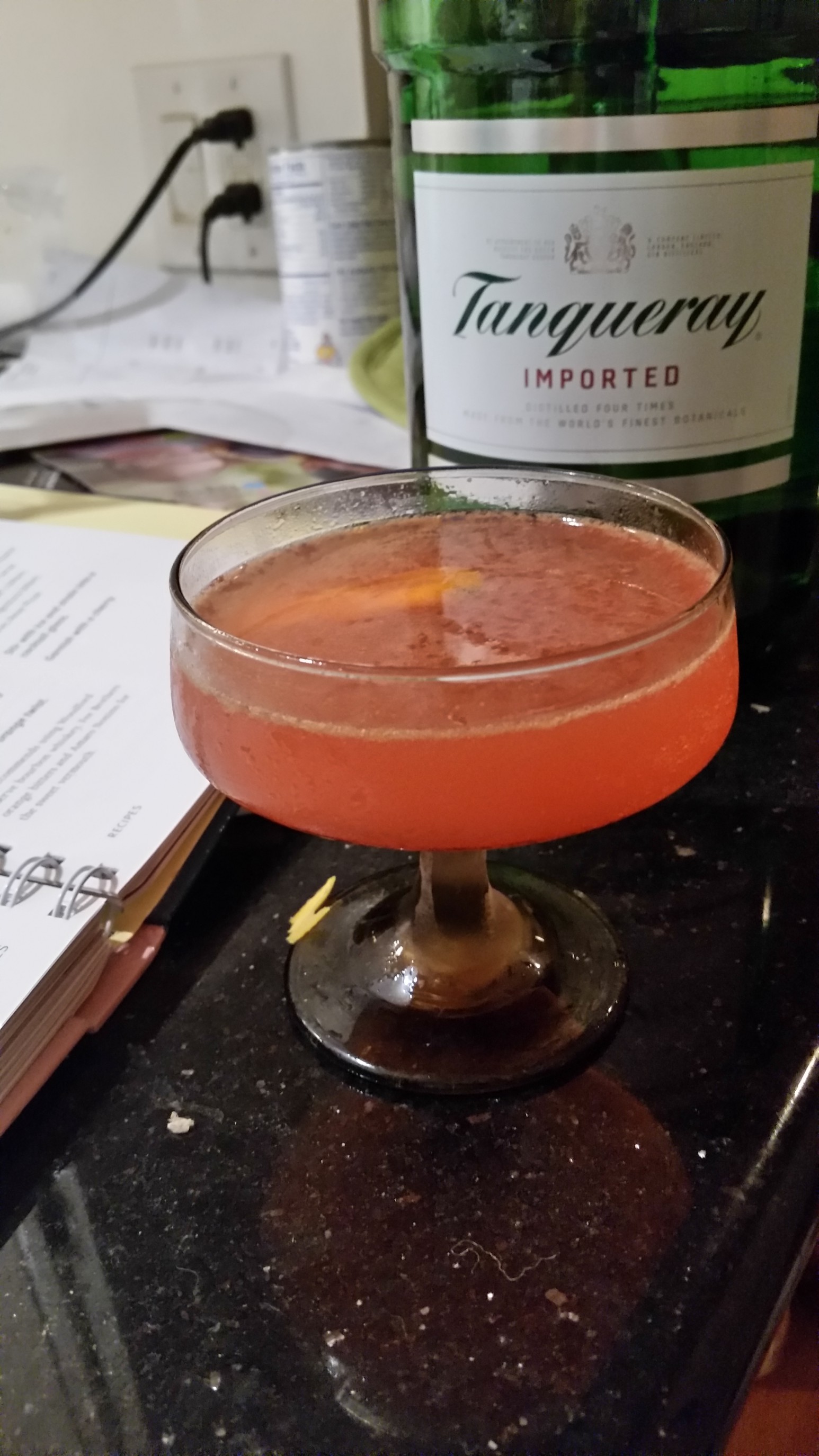Drink of the Week: The Knickerbocker
 In terms of nomenclature, today’s drink is a nice segue from our last drink of the week, the Algonquin. That drink was (probably) named for the historic Manhattan hotel and its bar. The Knickerbocker is named for the archaic nickname for all New Yorkers, i.e., a Knickerbocker was once to NYC as a Hoosier is to Indiana. If you’re a tri-state area basketball fan, you probably know all this already.
In terms of nomenclature, today’s drink is a nice segue from our last drink of the week, the Algonquin. That drink was (probably) named for the historic Manhattan hotel and its bar. The Knickerbocker is named for the archaic nickname for all New Yorkers, i.e., a Knickerbocker was once to NYC as a Hoosier is to Indiana. If you’re a tri-state area basketball fan, you probably know all this already.
On the other hand, it’s also the completion of something of a trilogy with two other recent posts, the Blinker and the Monkey Gland. The common thread in these three drinks is a revived cocktail sweetener I’ve only recently become aware of: raspberry syrup. We’re not talking about just any raspberry syrup but specifically the stuff that’s manufactured by purveyors of jams and jellies and intended mainly to be poured over ice cream.
The Knickerbocker always seems to feature gold rum and raspberry syrup but, beyond that’s it’s another one of those drinks where the recipes vary so greatly they’re barely the same drink. Here’s the version I went with, which I pretty much ripped off entirely from cocktail superhistorian David Wondrich. See what you think.
The Knickerbocker
2 1/2 ounces golden rum
1/2 ounce lime juice
1 1/2 teaspoons raspberry syrup
1/2 teaspoon orange curacao
1 spent lime wedge and whatever berries you can find — interesting but not necessarily essential garnishes
Place the liquid ingredients in a cocktail shaker with plenty of ice. Shake very vigorously. Dump the contents, ice and all, into a double-sized rocks/old fashioned glass. Add the garnishes listed or other fruits of your choice if you’re feeling adventurous. Toast whatever you like, I’m out of ideas this week.
***
I actually started my Knickerbocker holiday with the version featured in Ted Haigh’s Vintage Spirits and Forgotten Cocktails, which drew me into my raspberry syrup madness in the first place. That one featured an entire ounce of lemon juice with more sweet ingredients to compensate. I found it both too sweet and too sour.
By comparison, Mr. Wondrich’s version was a bracing, somewhat macho, treat, which makes sense as Ted Haigh tells us the full name of the drink is the Knickbocker a la monsieur — apparently there’s a Knickerbocker out there that was originally intended strictly for les mesdames. (I’d probably love it, I’m a girl-drink drunk at heart.)
While there may be tons of variations of the Knickbocker out there, anytime I tried to vary the Wondrich recipe ever so slightly, I came up a loser. Deciding to switch my ultra-thick Smuckers raspberry for the more easily dissolved Torani raspberry syrup yielded an unpleasant medicinal taste. Chastened to some degree, I experimented with an additional half teaspoon full of the Smuckers. Another bust that actually tasted less sweet; I don’t even know how that’s possible.
I did have fun throwing in various kinds of (overpriced but tasty) berries into the drink. They are such a part of this particular iteration of the Knickerbocker that Dave Wondrich actually suggests serving the drink with a straw and tiny spoon for the berries…personally, I can see the spoon but I’m not a big fan of straws with this sort of beverage. I want the ice to be a bit more forward, I guess.
I also learned something new. You must refrigerate your supermarket raspberries and never, ever leave them in your car for a few hours on a 70+ degree afternoon, unless you like your berries better after they’ve grown fur.
You can follow us on Twitter and Facebook for content updates. Also, sign up for our email list for weekly updates and check us out on Google+ as well.
Posted in: Food & Drink, Lifestyle, Vices
Tags: cocktails, Drink of the Week, Flor de Cana Gold, Happy Hour, The Algonquin, The Blinker, The Clover Club, the Knickerbocker, The Monkey Gland

 Never fear, absolutely no simians were harmed in the making of today’s DOTW. The Monkey Gland is, in fact, a sly wink to a prohibition-era alleged health treatment which, for a time, was seriously in vogue with the (maybe not so) smart set. It did, in fact, call for the transplantation or grafting of the testicular tissue of a presumably very unhappy primate onto the testicular tissue of a slightly less unhappy primate, i.e., a male human being. Say what you will about modern day snake oil supplements and the like, they rarely cause intense groin pain.
Never fear, absolutely no simians were harmed in the making of today’s DOTW. The Monkey Gland is, in fact, a sly wink to a prohibition-era alleged health treatment which, for a time, was seriously in vogue with the (maybe not so) smart set. It did, in fact, call for the transplantation or grafting of the testicular tissue of a presumably very unhappy primate onto the testicular tissue of a slightly less unhappy primate, i.e., a male human being. Say what you will about modern day snake oil supplements and the like, they rarely cause intense groin pain.








